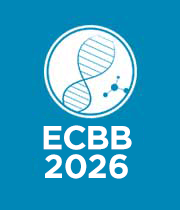Covid-19, and Other Infectious Diseases
COVID-19 is the greatest pandemic of this century in terms of scope and speed, with the highest number of global mortality, with the majority of deaths occurring in high-income countries. The infection fatality rate is driven by risk factors such as growing age, obesity, and comorbidities such as lung disorders, diabetes, cancer, and neurological diseases. Infectious diseases are illnesses brought on by bacteria, viruses, fungi, or parasites. Our bodies are home to a variety of creatures. In most cases, they're innocuous or even beneficial. However, some microbes can cause disease under particular circumstances. Emerging infectious disease epidemics are most likely to start in wildlife, and they're on the rise thanks to socioeconomic, environmental, and ecological variables, as well as increased mobility and globalisation, including climate change. The individuals most at risk, such as pregnant women for Zika and the elderly for COVID-19, the vectors of transmission, the mortality rate, and the transmissibility, which is generally assessed as the basic reproduction number, differ in many ways.

Murray Moo Young
University of Waterloo, Canada
Limongi Tania
University of Turin, Italy



Title : Improving health in over 40,000 patients: The impact of nanomedicine fighting antibiotic resistant infections
Thomas J Webster, Brown University, United States
Title : Advancement in dual lateral flow immunoassay design for sensitive, rapid detection of rotavirus and adenovirus in stool samples
Ayan Ahmed Isse, Genexus Biotech Company, Somalia
Title :
Luis Jesus Villarreal Gomez, Universidad Autonoma de Baja California, Mexico
Title : Renewed novel biotech ideas, with bioreactor bioengineering economic impact
Murray Moo Young, University of Waterloo, Canada
Title : Osmotic lysis–driven Extracellular Vesicle (EV) engineering
Limongi Tania, University of Turin, Italy
Title : Diversity analyses of microbial communities in Armanis gold-polymetallic mine and acid mine drainage: Bioremediation
Anna Khachatryan, SPC Armbiotechnology of NAS of Armenia, Armenia